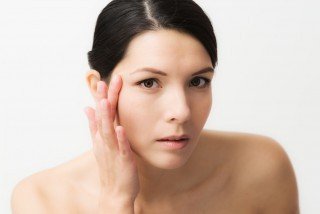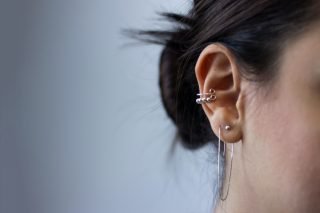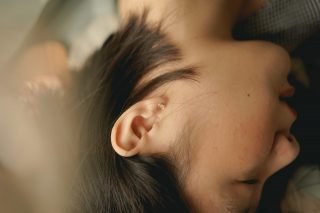Most non-disabled people are born and grow up with all of their senses, but as we age, everything starts to deteriorate, no matter what we try to do, but there are some measures that we can take to care of ourselves and our senses to try and lessen the damage that comes with age. Have a read of this article for ideas on common conditions and how you can protect yourself.
Protect Your Skin
Skin is the largest organ of your body; it covers the whole of your body and has seven layers of ectodermal tissue. It is a living waterproof shield that protects your muscles, bones, and internal organs from simple things like sun damage and bacteria, all the way to more serious wounds that would be life-threatening without the skin acting as a barrier.
So then, how can we protect this wonderful organ?
With the promise of summertime just around the corner, everyone will be ready to shake off the cold weather and hit the beaches and back yards as soon as the sun comes out. The most crucial thing to remember is that you need to protect your skin from the sun’s rays with sunscreen with a strong SPF of 50 or above.

RossHelen/Shutterstock
Though ideally, you should be doing this all through the year, and not just when the sun is beating down without a cloud in the sky, as the sun is always in the sky, even when you cannot see it, and the UVA/UVB rays will still reach your skin, increasing the risk of skin cancers.
You should regularly check your skin for any irregularities, even the smallest new mole that does not look right; get it checked by a doctor rather than leaving it; it is better that you worry over a benign mole than ignore something that could become life-threatening.
Look after your skin, and it will protect you.
Eyes
For most people who are born with sight, your eyes are one of the most important organs in your body, and it is hard to imagine what you would do if you were to go blind.
As you age, it is recommended that you speak to doctors more frequently to detect any changes in your vision. Medical experts suggest that you should see a doctor or optician once every two to four years once you hit the age of 40, with it dropping to once every three years once you hit 55 years old. You can monitor any gradual or long-term changes in your vision, so you will be more likely to detect anything that is a cause for concern.
A person’s vision can deteriorate for many reasons; there can be a genetic predisposition to certain conditions, natural deterioration as you age, or even conditions that develop through childhood; it is not uncommon for people to need eye condition treatment at some point in their lives. The most common conditions are cataracts, glaucoma, macular degeneration, nearsightedness (hyperopia), shortsightedness (myopia), and astigmatism. Let’s take a look at these conditions in more detail.
Cataracts

LarsZ/Shutterstock
This is a cloudy film that gradually covers the lens of the eye. It might start off as slightly blurred vision, faded colors, or an inability to see clearly at night. Cataracts can affect one or both eyes. It is usually diagnosed through a routine eye check-up and then monitored, and severe cataracts can be removed through surgery by replacing the lens of the eye.
Glaucoma
This is a very gradual onset condition that is caused by damage to the optic nerve and abnormally high pressure in the eye. Symptoms are not usually noticed until the more advanced stages of the condition, but they can start with blurred vision, rainbow halos around lights, and tenderness around the eye. It is usually in both eyes but will often be worse in one of them. It is usually diagnosed in a thorough dilated eye examination, and it can be treated with eye drops, laser treatments, or surgery, depending on the severity, though it will be a lifetime treatment.
Macular Degeneration
This condition is more widespread in people over the age of 50. It is known as age-related macular degeneration, and it is a permanent degenerative sight loss condition, though there is another type called Stargardt disease or juvenile macular degeneration that can affect children and young adults.
The macula is a central part of the retina that can wear down over time, and you might not be aware of the condition until it worsens; some of the symptoms include blurry and dark areas at the center of your vision, a difference in color perception, and noticeably less clear vision. While there are no cures for this condition, different treatments can help lessen the symptoms, such as medications, laser surgeries to seal off leaking blood vessels around the retina, and daily living aids to help one see better.
Hyperopia
Nearsightedness makes it difficult to see things close up. This is usually a condition seen at birth and will often run in families. That said, it can also develop over time, and distance vision may not be affected. Common symptoms include blurred vision when things close up, a need to squint to see, trying to hold objects at a distance to see clearly. This is a condition that can be detected during a routine check-up and corrected through glasses, contact lenses, or laser treatment. 
Myopia
Also known as shortsightedness, this condition makes it difficult to see at a distance. This is a condition that can occur at any age and can be worse in one eye. Common symptoms include squinting to see distant objects, moving closer to seeing signs, or screens, headaches from eye strain, and general blurriness.
Glasses or contact lenses will usually be enough to correct the vision and prevent eye strain, but some people might prefer surgery. There is also corneal reshaping therapy (CRT) through Ortho-K technology; it is possible to control the level to which myopia can negatively impact your eyes, helping to reshape your corneas overnight to correct your eyesight temporarily, and it will last all day for as long as you wear the lenses at night.
Astigmatism
There is no identified cause for this condition, though it often occurs with both near and shortsightedness, and it can occur at any age. Usually, the light will reach one point in the back of the eye; however, an astigmatic eye is shaped slightly differently, so the light is refracted at different points. This causes symptoms like headaches, distorted or blurred vision, and difficulty seeing in low light conditions. The main treatments for this are the wearing of glasses, contact lenses, and even laser surgery.
Ears
Everyone likes to have some peace and quiet sometimes. But unless you are born deaf or have not been able to hear for a long time, suddenly losing your hearing can be a distressing thought. Luckily, there are a lot of things that can help with hearing loss as technology is constantly improving to make hearing aids more effective.
Here are some of the common conditions to look out for and how to seek treatment for them so you can look after your hearing for years to come.
Presbycusis

Photo by Kimia Zarifi on Unsplash
Age-related hearing loss is a degenerative condition that affects one in three people between the ages of 64 and 75. It can occur in both ears, be worse in one, or affect one. It is not uncommon for people to not realize that they have a problem with their hearing until someone points out that the television is on too loud, or they have to shout to be heard. As it is an age-related condition, it is due to the brain’s nerve pathways starting to break down, but it can be managed with the help of hearing aids and the use of subtitles when watching television, so no one else is getting deafened by the volume. The best thing to do is go to a hearing specialist and talk to them if there are any concerns about your hearing.
Tinnitus
This is a common condition that can affect anyone at any age. It is characterized as hearing sounds with no external source. These sounds are typically ringing, buzzing, wooshing, or other types of white noise. It can either be constant background noise or come and go temporarily, like after being in a noisy environment for an extended period. There is no cure for this condition. However, tinnitus retraining therapy can help the sufferer tune out the sounds if it is chronically disturbing them and disrupting their lives.
Ear Infections
An infection is the most common cause of pain in the ear. It can either be an inner or outer ear infection. An inner ear infection is often caused by cold and flu viruses settling in the Eustachian tube that connects the ear to the sinuses. It will often clear up on its own after a few days. The typical symptoms are pain, discharge, trouble hearing, a temperature, and generally feeling unwell.
Over-the-counter medications will usually help with the pain. However, if it is not better after a week, it is good to go to the doctor for some antibiotics. Outer ear infections are more common in adults aged 45 to 75. It is a bacterial, fungal, or yeast infection of the skin. It can be caused by an irritation such as wearing earplugs or hearing aids or having conditions such as eczema, dermatitis, or psoriasis.
Typical signs of an infection include temperature, pain, and difficulty hearing. That said, you should also look for a difference in the skin around the ear, as it will likely be red and scaly. Usually, it is an infection that will need antibiotics. Thus, as soon as you start feeling symptoms, it is best to get to the doctor.

Photo by Jessica Flavia on Unsplash
Blocked Ears
Wax usually comes out on its own. Unfortunately, a build-up of wax in the ear can cause difficulty in hearing or even itchiness. The most important thing is never to try and remove it yourself. Always go and see a doctor if you think that you have anything blocking your ears. They will be able to help you find the best solution.
Perforated Eardrum
This is where a hole in the eardrum is caused, most commonly by a loud noise, injury, or an infection. They can be painful, and the sufferer may be unable to withstand loud noises. However, the hole will often heal on its own. Over-the-counter pain medication and some over-the-ear headphones to block out loud noises should be enough to help until the eardrum is healed. Sometimes in extreme cases, surgery is needed. However, as long as you see a doctor and follow their advice, there should be no long-term damage.
Ménière’s disease
This is a long-term condition that can worsen as time goes on; it affects the balance and hearing areas of the inner ear; it is most common in people between the ages of 20 and 60. Symptoms include dizziness, nausea, feeling unsteady, and a buzzing or ringing in the ear, or a sudden drop in hearing. These symptoms can come on suddenly and last from minutes to days, leaving the sufferer feeling drained after an attack. While there is no cure, treatments for nausea and vertigo are commonly given to alleviate the symptoms.





![women [longevity live]](https://longevitylive.com/wp-content/uploads/2020/01/photo-of-women-walking-down-the-street-1116984-100x100.jpg)










